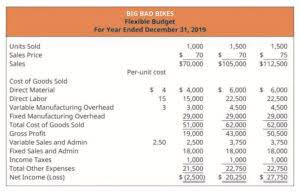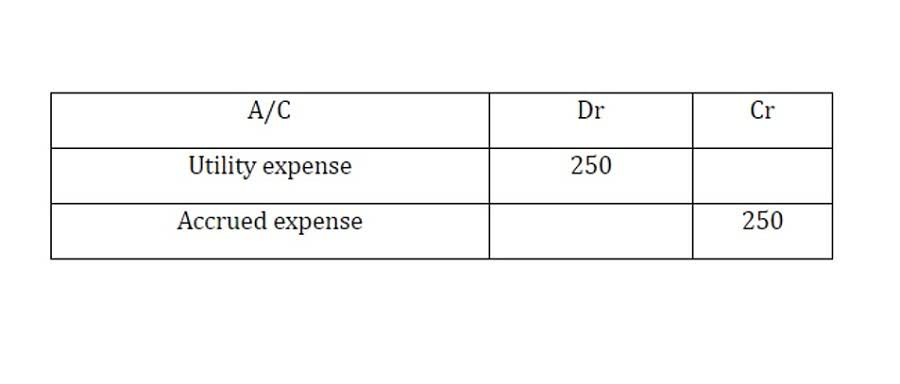
Make sure you have separate accounts for assets, liabilities, equity, income, and expenses. This will help you keep track of your transactions and provide accurate financial statements. Opening Balance Equity is an equity account that represents the net balance of a company’s assets and liabilities at the start of a new accounting period. The purpose of this account is to ensure that the accounting equation remains balanced, which means that the total assets of a company are equal to the sum of its liabilities and equity. For example, if you have an asset account like a checking account, and a balance of $50 is added to accounting software, then the other account must be provided $50 to make your balance sheet balanced.
Opening Entry Example
Click here for free downloadable balance sheet templates you can use now. In QuickBooks, you can set up different equity accounts under the ‘Chart of Accounts’ feature. https://www.bookstime.com/ This may include common stock, preferred stock, paid-in capital, retained earnings, and dividends. Each of these represents different aspects of members’ equity, and their use will depend on your business’s specific financial structure. The closing balance, on the other hand, is the final balance of an account at the end of an accounting period.
Time tracking

After the initial setup, you may need to make adjustments or corrections to the opening balance equity account. For example, if you discover an error in your accounting records, you may need to correct the opening balance equity account to reflect the correct balance. This misrepresentation can lead retained earnings to an incorrect assessment of the company’s financial stability, potentially misleading stakeholders and investors.
Allocate Opening Balance Equity to Owner’s Equity or Retained Earnings
It can also affect the accounting equation by introducing errors in the balance between the company’s assets, liabilities, and equity. If the company has inventory, the opening balance equity account should be adjusted to reflect the correct inventory value. This can be done by creating a journal entry to debit the inventory account and credit the opening balance equity account or vice versa.
- Whenever a company gets part of the cash from loans or other financing facilities, then the accountant should increase the liability on the credit side of the journal entry as this reflects the debt.
- Money from investors or lenders will be entered as transactions during the accounting period.
- Following the transaction the equity (share capital) of the business will increase by 100.
- The reconciliation clears up these questions, giving the numbers context.
- The beauty of cloud accounting software is that you can load up your records wherever you are rather than waiting to get back to your desk, so you’ll always have a real-time view of your business’ finances.
- This section provides a detailed step-by-step approach to zero out the Opening Balance Equity account in QuickBooks and best practices to ensure accuracy.

We’re always available if you need more assistance managing your accounts in QuickBooks Online. Here you will get answers to all your questions related to opening balance equity. We’re always available to offer further assistance with managing your accounts in QuickBooks Online. You can filter the list of your Chart of accounts to display the Opening Balance Equity account. It’s always a pleasure to have what is opening balance equity you engage with the QuickBooks Community forum, Norma.

Main Purposes of Financial Statements (Explained)

These balances are recorded in the appropriate accounts, such as cash, accounts payable, and accounts receivable. The total of these balances should be equal to the company’s total equity, which is recorded in the Opening Balance Equity account. If you are a small business owner or just starting out, you may have come across the term “”opening balance equity”” and wondered what it means. Opening balance equity is the account that’s created when you first set up your company’s books in accounting software.
- Opening balance equity is a term used in accounting to describe the initial balance of equity in a business at the start of a new accounting period.
- However, this year, two journal entries have been inexplicably added to our Opening Balance Equity account.
- – Forgot to illuminate the opening balance equity account when the need was over.
- If you’re in need of one, there’s an awesome tool on our website called Find a ProAdvisor.
- To ensure that your QuickBooks firm balances on first day, you must put the identical amount into your opening balance equity account.
- Remember to regularly visit the Intuit support articles and blogs to ensure your practices are up-to-date and accurate.
- The opening balance is the first entry in the company’s accounts when it first begins trading and at the start of each new accounting period.

Ultimately, mastering the management of opening and closing balances is key for ensuring the long-term financial health and success of any business. Having accurate opening balances for a new accounting year is necessary for businesses to start on the right foot financially. To streamline the process of managing opening and closing balances, many businesses use accounting software solutions. These tools automate various accounting tasks, including the calculation and transfer of balances between accounting periods. By integrating accounting software, companies can minimise manual errors, improve efficiency, and ensure accurate and timely financial reporting. They represent the final figures for each account at the end of an accounting period.
- In your QuickBooks company, you will undoubtedly find an account called Opening Balance Equity.
- A new firm may also be launched, faults can be fixed, new accounting periods can be started, and the equity accounts of merging businesses can be compared.
- This challenge arises from the need to distinguish between legitimate opening balances and transactions stemming from actual business operations.
- The Chart of Accounts is a list of all accounts used by a company to record financial transactions.
What Is the Difference Between Opening Balance Equity and Retained Earnings?
- The balance sheet is a financial statement that shows the company’s assets, liabilities, and equity.
- Thus, the best way to resolve this is to undo all the reconciled transactions and create a Journal entry (JE) to record it.
- Auditors assess the valuation and completeness of these records, ensuring that the equity balance is reflective of the company’s true financial state at the point of transition.
- It plays a vital role in tracking the equity incorporated during the initial setup of your books.
- When you input initial inventory quantities, QuickBooks temporarily balances these entries using the Opening Balance Equity (OBE) account.
- This balance sheet provides a snapshot of the company’s financial position at the very beginning of its operation.
Maintain professional balance sheets and simplify accounting reports with FreshBooks. If you have been asking yourself, “What is opening balance equity on a balance sheet? We will go over opening balance equity, the reasons it’s created, and how to close it out so your balance sheets are presentable to banks, auditors, and potential investors.

